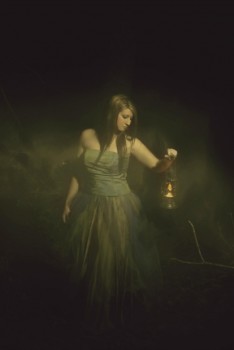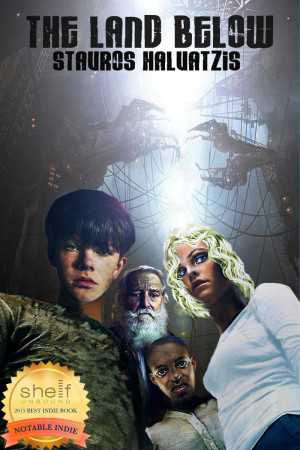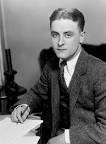Stavros Halvatzis's Blog, page 43
January 30, 2016
Spiritual Growth in Maturing Characters
 How does spiritual growth relate to a deepening maturity? Continuing with age-related themes, Linda Seger offers the twenties-through-forties as yet another age-focused grouping.
How does spiritual growth relate to a deepening maturity? Continuing with age-related themes, Linda Seger offers the twenties-through-forties as yet another age-focused grouping.
Although the twenties category has been discussed separately in this blog, the overlap here points to a deepening engagement with themes that become increasingly more important as one gets older – such as those clustering around spiritual growth.
Twenties through Forties
The important thing during these years is the sharpening focus, as one matures, on spirituality versus materialism. Stories in this category tend to explore the things that are truly important in life, things that, progressively, become more meaningful as wisdom grows through age, through life’s hard knocks.
Having achieved successful careers, often at the expense of others, some characters are ready to exchange material comforts in favour of spiritual and moral values such as integrity, social conscience, wisdom, and healthy relationships.
Some characters even factor in self-sacrifice for the greater good as a viable course of action. Films such as Seven Years in Tibet, Ghandi, Erin Brokovich, and Norma Rae touch on the spiritual themes mentioned above.
The lesson is that as one moves towards a deeper maturity so does one’s attention – from the visceral pleasures of physical success to the more nascent, invisible rewards of value-driven action: from receiving to giving, loving, educating.
Stories driven by characters embodying such themes, then, resonate with more mature audiences who recognize these needs in themselves.
Summary
Stories about maturing characters weigh up the spiritual over the material and come down on the side of the spiritual as a thematic outcome.
Invitation
If you enjoyed this post, kindly share it with others. If you have a suggestion for a future one, please leave a comment and let’s get chatting. You may subscribe to this blog by clicking on the “subscribe” or “profile” link on the bottom right-hand side of this article. I post new material every Monday.
Tweet
January 24, 2016
Young Adults Want This in a Story
 Although young adulthood may share some of the themes associated with the teen years, such as the search for love and intimacy and discovering one’s identity, this thematic category digs deeper than the former – explored in last week’s post. It tends to focus more on achievement and efficacy in the world. It not only establishes the theme as a protagonist’s goal, it scratches for the truth that lies below the surface.
Although young adulthood may share some of the themes associated with the teen years, such as the search for love and intimacy and discovering one’s identity, this thematic category digs deeper than the former – explored in last week’s post. It tends to focus more on achievement and efficacy in the world. It not only establishes the theme as a protagonist’s goal, it scratches for the truth that lies below the surface.
Stories, such as Titanic and Elizabeth, for example, respectively explore the consequences of choosing someone to love that our parents would disapprove of, or choosing duty over love.
Young Adulthood and Story Themes – Linda Seger
Because many popular stories and films tend to cater for readers and audiences in their twenties and thirties their themes center more on success and achievement – strong driving forces in that age group.
Themes about success focus on achieving success in the world’s eyes – about public achievement. If the protagonist fails to have her dream acknowledged in the public arena it may be that the dream is unimportant or insignificant. Important achievements, by contrast, carry the stamp of public approval: John Nash wins the Nobel Prize in A Beautiful Mind, the first Star Wars ends with a ceremony, and Clarice receives an award at the end of Silence of the Lambs.
Stories in the category, can, however, be more inwardly-looking, exploring the conflict between career and family (Melvin’s Room, One True Thing), or the tension between fame, materialism and integrity – Magnolia, Jerry Maguire, Quiz Show. Here the storyline tends to explore the outer goal while the inner story, driven by a more intimate exploration of the theme, examines the inner world through subplot.
Regardless of the level of intimacy, however, stories that fall in the young adulthood category focus more on the consequences of pursuing success or fame through career, its rewards and costs, rather than discovering the themes as goals in the first instance – the first order search in teenage stories.
The young adulthood category, then, represents a maturing of the teenage dream into an ostensible set of goals that have public and personal effects.
Summary
Stories involving characters in the young adulthood category tend to explore the consequences, good and bad, of pursuing career, success, and fame.
Tweet
The post Young Adults Want This in a Story appeared first on Stavros Halvatzis Ph.D..
January 16, 2016
Teenage Dreams
 Teenage Dreams, the second in a series of articles dealing with age-specific stories, follows on from last week’s piece on childhood themes, drawn from Linda Seger’s Advanced Screenwriting.
Teenage Dreams, the second in a series of articles dealing with age-specific stories, follows on from last week’s piece on childhood themes, drawn from Linda Seger’s Advanced Screenwriting.
Seger asserts that almost all teenage stories deal with the notion of identity, since our teens and early twenties are driven by our need to discover ourselves – who are we, what do we want to do, or be, when we grow up.
Teenage Themes
A teen-orientated story typically explores the themes of sexual identity (Risky Business, Boys Don’t Cry), discovering love (Titanic), finding one’s creative self in a conformist society, securing one’s individuality in a culture that often prescribes who you are or might become (Room with a View, The Cinder House Rules).
In my award winning novel, The Land Below, for example, Paulie, the book’s protagonist, who is nearing the end of his teens, refuses to accept the dictates of the Governor and Senators who insist that life on the surface of the world is unlivable and that one should not, under any circumstances, spread rumors to the contrary.
Fighting against these dictates, Paulie rejects his social status as a lowly orphan when he develops feelings for the Governor’s daughter and ends up becoming the leader of a band of teenagers seeking to escape the suffocating confines of the Land Below.
Paulie, in effect, redefines his place in society. But in doing so he threatens the Governor’s grip on the closely controlled subterranean world. It is this conflict between the freedom to choose and the impulse to control, rooted in the opposing needs of the protagonist (Paulie) and antagonist (Governor, et al.) that creates the plot of the story.
Importantly, then, the theme in any story steers the plot, turning it this way and that, as the protagonist continues to explore and test it until the end of the tale.
Summary
Teenage themes cluster around questions of who are we, what do we want to do, or be, when we grow up.
Tweet
The post Teenage Dreams appeared first on Stavros Halvatzis Ph.D..
January 9, 2016
Themes and Stories
 Themes are the reason we write stories – the things we care most about. Themes contain the moral message, the value-driven truth at the core of all that happens in the story.
Themes are the reason we write stories – the things we care most about. Themes contain the moral message, the value-driven truth at the core of all that happens in the story.
Although the greatest themes are universal, they are also local to specific age groups. Children, for example encounter different problems than do people approaching the end of their lives. As writers, we need to understand the underlying concerns of each age group if we are to make our stories relavent to specific categories of readers and audiences.
In her book, Advanced Screenwriting, Dr. Linda Seger breaks down age groups into the following categories: childhood, teen years, young adult, twenties to forties, fifties through eighties, old age, and end-of-life. Over the next few articles, I’d like to examine each category in turn.
Themes and Childhood
At the core of every story about children are issues of self esteem, trust, and a sense of belonging. Home Alone, War Games, E.T. are good examples of stories that deal with these themes.
A child embarks on a journey which gradually builds, with all its gains and reversals, the child’s self confidence, resulting in a better sense of belonging and self-esteem. This growth is typically achieved by overcoming obstacles strewn in the child’s path by teachers, parents, bullies.
The child can deal with these problems in two ways – she can blame herself, become introverted and lose confidence and self esteem, growing depressed, or she can project the problem onto others, becoming rebellious, delinquent, perhaps deciding to live outside the law. This can effect the child’s immediate family and friends, drawing them into the fray.
Typically, in an upbeat ending, the child gradually overcomes these obstacles by engaging in purposeful action driven by sustained effort, ingenuity, and courage. The catalyst is usually underpinned by some meaningful event from the back story which surfaces at the appropriate moment to help her change direction. The result is an increase in self esteem, trust in herself and in others, and a sense of belonging.
Summary
Specific themes cluster around specific age groups.
The post Themes and Stories appeared first on Stavros Halvatzis Ph.D..
January 2, 2016
Writerly Advice
Joyce Carol Oates
Writerly advice is not that hard to find, especially if you’re hooked up to the Internet. Some of this advice is excellent, some of it not so good.Further to the dictum of knowing the rules before we break them, I offer yet another list, this time from Joyce Carol Oates – Princeton University’s Roger S. Berlind ’52 Professor in the Humanities with the program in Creative Writing, and a multi-award winning novelist:
1. Write your heart out.
2. The first sentence can be written only after the last sentence has been written. FIRST DRAFTS ARE HELL. FINAL DRAFTS, PARADISE.
3. You are writing for your contemporaries – not for Posterity. If you are lucky, your contemporaries will become Posterity.
4. Keep in mind Oscar Wild: “A little sincerity is a dangerous thing, and a great deal of it is absolutely fatal.”
5. When in doubt how to end a chapter, bring in a man with a gun. (This is Raymond Chandler’s advice, not mine. I would not try this.)
6. Unless you are experimenting with form – gnarled, snarled & obscure – be alert for possibilities of paragraphing.
7. Be you own editor/critic. Sympathetic but merciless.
8. Don’t try to anticipate an ideal reader – or any reader. He/she might exist – but is reading someone else.
9. Read, observe, listen intently! – as if your life depended upon it.
10. Write your heart out.
There you have it. Ten distinctive bits of writerly advice to add to our toolkit. Take the time to ponder upon each in turn.
Summry
Study the suggestions of accomplished writers to glean valuable information on writing.
The post Writerly Advice appeared first on Stavros Halvatzis Ph.D..
December 27, 2015
The Heart Remembers
 I was not going to write a blog this week – so close after Christmas and so close to the new year. I’m so chock-a-block with chocolates, good Greek food, and merriment that, frankly, I thought I’d not be in mood. Truthfully, I have never been a great one for that sort of festivity.
I was not going to write a blog this week – so close after Christmas and so close to the new year. I’m so chock-a-block with chocolates, good Greek food, and merriment that, frankly, I thought I’d not be in mood. Truthfully, I have never been a great one for that sort of festivity.
But as I think about the moments of the past day or so, moments spent with family and friends where new memories were laid down for future access, I get to thinking about love and memory and how they are golden threads that stitch our lives together and give it meaning, so I decide to write down a few words anyway.
I have often wished I could travel back in time, back to some juncture in my life and change something small – go left instead of right, pick up the phone when I did not; small things that sometimes have big consequences.
As if to torment myself, I often imagine revisiting such moments, over and over again. I see two versions of myself, one standing to the side, like an invisible unsmiling time-traveller, looking on at my younger self as he goes about his business, and I wish I could whisper in his ear about the things I know now.
But of course the past is a place to be frequented by the heart, while the present affords us the opportunity to ensure that the past will be a good place to visit in the future.
So, now, as I say goodbye to friends and family for yet another year, I take the time to hug each of them a little tighter and longer than before, and tell them how much I enjoyed our time together.
I throw a wink over my shoulder at my future self standing under the big tree in our yard to let him know that I finally get it. This time I imagine he is smiling.
The post The Heart Remembers appeared first on Stavros Halvatzis Ph.D..
December 19, 2015
A Good Story Needs A Good Plot
 A good plot makes for a good story. One of the surest ways to strengthen the plot of your story is to tie your scenes together through cause and effect. The English novelist, E. M. Foster, for one, defined plot as a series of events linked by causality.
A good plot makes for a good story. One of the surest ways to strengthen the plot of your story is to tie your scenes together through cause and effect. The English novelist, E. M. Foster, for one, defined plot as a series of events linked by causality.
Aristotle referred to this important aspect of a story as unity. He believed that if a scene makes no difference to the characters of a story then it has no business being in the story. Unity, or causality, is fundamental to the well-written tale.
In her book, The Novelist’s Guide, Margaret Geraghty, provides this example: ‘The king died and then the queen died’ is not a plot. Although the two events follow upon each other they are not causally linked. ‘The king died and then the queen died because of grief’, however, is a plot because the first event causes the second.
Causality is at its strongest when it stems from a character’s goals, needs, wishes and desires pitted against an opposing character or force. In my award winning novel, The Land Below, for example, the hero’s desire to explore the world beyond the confines of his underground existence drives most of the plot. It explains his actions and reactions to events around him and makes his actions authentic.
Novice writers often believe that a series of action-packed scenes makes for gripping viewing or reading. I remember reading a script filled with scenes comprising mostly of ‘skop, skiet, en donner’ (an appropriate Afrikaans expression for violent and melodramatic action). The student believed that pace and action was what people wanted from a story.
That, may, in part, be true, but that is not all that people want. The student’s characters had no higher purpose other than beating each other up. The scenes provided no new information; they failed to deepen or explain character; the characters survived only to meet up again and repeat the same action in a different setting – in short, the scenes had no link to the overall plot. There was no plot to speak of precisely because the action did not have repercussions. It was action without psychological reaction. Needless to say the student returned to the word processor, where, I am happy to report, he made progress.
Linking scenes through cause and effect, showing actions having consequences, is indispensable to generating a good plot.
Summary
A plot is dependent on consequential actions undertaken by characters with conflicting goals, wants, needs and desires.
The post A Good Story Needs A Good Plot appeared first on Stavros Halvatzis Ph.D..
December 12, 2015
F. Scott Fitzgerald’s Advice to a Young Writer
 F. Scott Fitzgerald offers this advice in response to a short story sent to him by Francis Turnbull, a Radcliffe College student and family friend.
F. Scott Fitzgerald offers this advice in response to a short story sent to him by Francis Turnbull, a Radcliffe College student and family friend.
“… I’m afraid the price for doing professional work is a good deal higher than you are prepared to pay at the moment. You’ve got to sell your heart, your strongest reactions, not the little minor things that only touch you lightly … It was necessary for Dickens to put into Oliver Twist the child’s passionate resentment at being abused and starved that had haunted his whole childhood. Ernest Hemingway’s first stories ‘In Our Time’ went right down to the bottom of all he had ever felt and known. In ‘This Side of Paradise’ I wrote about a love affair that was still bleeding as fresh as the skin wound on a haemophile …
The amateur can only realize his ability to transfer his emotions to another person by some such desperate and radical expedient as tearing your first tragic love story out of your heart and putting it on pages for people to see. That any how is the price of admission.
The amateur, seeing how the professional having learnt all he’ll ever learn about writing can take a trivial thing such as the most superficial reactions of three uncharacterized girls and make it witty and charming – the amateur thinks he can do the same.”
F. Scott Fitzgerald’s advice, then, is to use genuine experience with heightened emotion when creating characters and stories, especially when first starting out. It takes many years of learning the tricks of the trade to be able to take seemingly small and trivial events as subject matter and make them interesting and absorbing to readers.
Summary
F. Scott Fitzgerald advises that we mine our lives for the big, wrenching events and emotions when starting out as writers. It will make our characters more authentic and impactful. We should expand our range as we master our craft.
The post F. Scott Fitzgerald’s Advice to a Young Writer appeared first on Stavros Halvatzis Ph.D..
December 5, 2015
For the Love of Story
 There are two ways to write a good story: You can be gripped by inspiration and allow it to guide your hand, or you can use the existing set of techniques and writerly advice to craft and polish your story until it sparkles like the crystals of a chandelier.
There are two ways to write a good story: You can be gripped by inspiration and allow it to guide your hand, or you can use the existing set of techniques and writerly advice to craft and polish your story until it sparkles like the crystals of a chandelier.
The first will come knocking on your door when it damn well pleases. It may take a week, a month, or even years. Or, it may never come at all. Few, but the very patient, will wait around for the languid muse to saunter in.
The second is to determine a time and place of your choosing and begin writing your story by utilising the many writing techniques at your disposal — a knowledge of story structure, how theme informs the ending, and so on. Sites such as mine, and many others, offer advice for free — for the love of story.
Will this second way guarantee a great story? Perhaps not. But it will set you on the path of writing a well-structured story.
Learn your craft by adding to your arsenal of techniques every day. Don’t let a day go by where a new spanner is not added to your toolbox. Work to master your craft, to be the best you can be, and in time, you will be.
In rereading Linda Seger’s Advanced Screenwriting, I was again reminded of the usefulness of certain practices — in this case, the practice of labeling scenes according to their function as a way of keeping the writer focused on how each narrative segments performs its task in service of the plot.
Apart from the inciting incident, turning points, midpoint, climax and resolution that we’ve all heard about, Seger labels several other sorts — the establishing scene, exposition scene, love scene, confrontation scene, pay-off scene, resolution scene, realisation scene, decision scene, the realisation-decision-action scene, and others.
In the film Big, for example, Josh decides to slot money into the vending machine in return for becoming ‘big’. In the following scene he realises that he is ‘big’. This leads him to an emotional reaction scene in which he begins to experience the complications of being an adult. The result is new action that has him working for a toy company as an adult, while, in many ways, he remains a child.
The point is that by studying the craft, by breaking your story up into a series of scenes with specific functions, scenes that connect to one another, you lay out a blueprint for fulfilling the structural requirements of most, if not all, stories.
I wouldn’t be surprised if the muse, being the jealous mistress that she is, decides to pay you an unexpected visit after all.
Summary
Studying the craft beats sitting around waiting for inspiration.
The post For the Love of Story appeared first on Stavros Halvatzis Ph.D..
November 28, 2015
Action, Description and Dialogue
 Blending action, description and dialogue together is a good way of sprinkling interest and variety in your scenes, providing it’s done well. Dialogue, at its best, not only reveals character and conveys information efficiently, it injects pace and rhythm into your story too.
Blending action, description and dialogue together is a good way of sprinkling interest and variety in your scenes, providing it’s done well. Dialogue, at its best, not only reveals character and conveys information efficiently, it injects pace and rhythm into your story too.
But too much dialogue can distance the reader from the physical environment of the scene.
Too often we break up dialogue by injecting trivial or inconsequential action and description. Characters casually leaning, smiling, drawing on cigarettes, without a deeper motive, lowers the quality of our writing.
Done well, however, significant action and description can spruce up any scene. In The Thomas Crown Affair a chess game between Faye Dunaway, the insurance investigator, and the criminal, Steve McQueen, bristles with sexual tension and innuendo. The phallic nature of the chess pieces and the sensual way they are being touched, supported by the array of fertile glances, underpins the laconic dialogue admirably.
In The Nostalgia of Time Travel, the climactic scene of the story, had to be handled sensitively since it brought together so many elements, including a startling revelation from the backstory which helps to explain much of the protagonist’s behaviour. References to the eye of the storm winking shut, the stars disappearing, and the parents being still like old photographs in an album, add to the undercurrent of meaning of the story. Here’s an example from the text:
The storm is picking up now and I struggle to hear the words spilling from his mouth. I look up at the sky. The eye is moving away, winking shut. The stars are a thin dotted line. Soon, they too will be gone.
“Time to leave, Ben,” Miranda pleads, pointing in the direction of the house through the throng of trees.
“Will you come with me?” I ask.
“Not this time.”
“Not ever,” Fanos says. “But you can start again. Find a happier time and place. Isn’t that what your theories talk about? The existence of the paths you wished you’d taken? All you’ve got to do is want it hard enough.”
I glance at my mother and my father. They stand holding hands silently, as if suddenly struck mute. Their eyes are upon me, searching for a clue to my true feelings. Their bodies are perfectly still, like the figures in black and white photographs in an old album are still.
Interspersing your dialogue with telling action and description that reveals character and deepens the meaning of your scenes is an essential skill in any writer’s toolkit.
Summary
Blend action, description and dialogue together to vary interest and deepen your scenes.
The post Action, Description and Dialogue appeared first on Stavros Halvatzis Ph.D..




